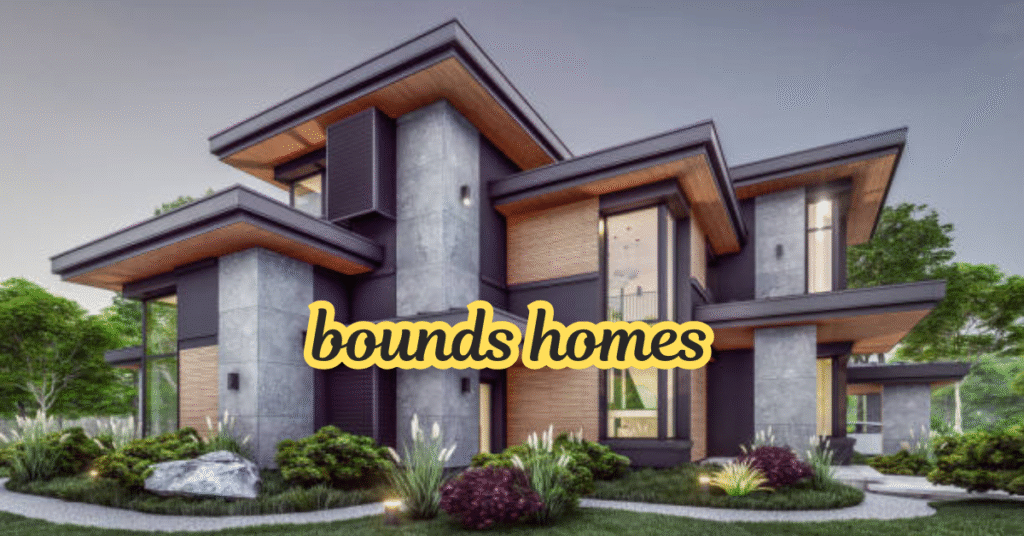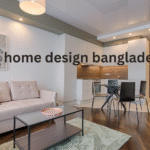In today’s housing landscape, Bounds Homes‘s represents more than just a residential development; it embodies a growing demand for practical, affordable, and aesthetically balanced living. For those searching the term “Bounds Homes’s,” the intent is often twofold: understanding what this concept means and learning why it is increasingly relevant in discussions of housing, architecture, and community planning. Simply put, Bounds Homes are thoughtfully designed properties that prioritize livability, affordability, and accessibility—making them an appealing choice for first-time buyers, families, and even investors.
This guide explores Bounds Homes in depth: their architectural philosophy, market appeal, community implications, and investment value. Whether you are a potential homeowner curious about costs, a real estate investor examining long-term returns, or simply someone interested in modern housing trends, this article provides a comprehensive view.
The Origins of Bounds Homes
The idea behind Bounds Homes‘s lies in creating housing solutions within realistic limits—or “bounds”—without compromising on quality. Unlike sprawling luxury estates or high-rise apartment complexes, Bounds Homes’s emphasize balance: enough space for comfortable living, efficient use of resources, and prices that remain accessible to a wider audience.
This approach emerged as a response to:
- Rising housing costs in urban centers
- The need for sustainable building practices
- Changing lifestyle preferences among younger generations
- A push for community-centric living rather than isolated development
Architectural Philosophy
At the heart of Bounds Homes’s lies a philosophy that merges practicality with design elegance. These homes are not about excess but about meaningful space. Architects focus on:
- Optimized Layouts: Every square foot is designed with purpose, avoiding wasted hallways or oversized rooms.
- Natural Light: Strategic placement of windows and skylights reduces energy use and enhances mental well-being.
- Functional Aesthetics: Clean lines, multi-use spaces, and durable materials keep homes stylish yet practical.
- Community Integration: Homes often include shared green spaces, pedestrian-friendly paths, and local gathering areas.
Bounds Homes’s represent the architectural shift toward minimalism without losing comfort, appealing to those who value intentional living.
Key Features of Bounds Homes
To better understand the concept, consider the common features that define Bounds Homes’s:
| Feature | Description | Benefit |
| Housing Size | Moderate floor areas between 1,200–2,000 sq ft | Balanced space without unnecessary excess |
| Sustainability | Use of energy-efficient materials and solar options | Lower utility costs, eco-friendly living |
| Design Style | Modern minimalism blended with warm finishes | Appealing to younger buyers and families |
| Affordability | Priced to attract middle-income households | Wider accessibility and market reach |
| Community Focus | Shared green areas and walkable designs | Stronger neighborhood connection |
| Flexibility | Adaptable spaces for remote work or multigenerational living | Meets evolving lifestyle needs |
Why Bounds Homes Are Increasingly Popular
The growing popularity of Bounds Homes’s can be explained by several converging trends:
- Affordability Crisis: Housing markets in major cities have pushed buyers to seek alternatives that offer value without debt overload.
- Lifestyle Shifts: Remote work requires homes that balance private and shared spaces, something Bounds Homes’s address.
- Sustainability Awareness: Eco-conscious buyers appreciate the emphasis on green building practices.
- Generational Preferences: Millennials and Gen Z favor simplicity, walkable communities, and functionality over traditional grandeur.
Economic and Investment Value
For investors, Bounds Homes‘s present unique advantages:
- Steady Demand: Middle-class buyers and renters consistently seek affordable yet attractive housing.
- Lower Vacancy Rates: Practical homes with community appeal are easier to rent or resell.
- Appreciation Potential: Sustainable design and strategic locations contribute to long-term property value.
- Diversified Appeal: Families, young professionals, and retirees all find these homes suitable.
This makes Bounds Homes’s not just livable, but also financially strategic.
Community and Social Impact
Unlike isolated developments, Bounds Homes’s often contribute positively to community dynamics:
- Shared Spaces Encourage Interaction: Gardens, playgrounds, and community halls foster neighborly bonds.
- Walkable Infrastructure: Prioritizing pedestrian-friendly design promotes healthier lifestyles.
- Inclusive Housing: By targeting affordability, these homes open ownership opportunities for broader demographics.
The result is not just housing, but stronger, more cohesive neighborhoods.
Design Inspirations and Variations
Bounds Homes’s are not one-size-fits-all. Variations exist to meet different lifestyle needs:
- Urban Bounds Homes’s: Compact but efficient layouts for city living.
- Suburban Bounds Homes’s: Slightly larger, with gardens and multi-car garages.
- Eco Bounds Homes: Off-grid options with renewable energy systems.
- Luxury Bounds Homes: Higher-end finishes while maintaining modest footprints.
Challenges Facing Bounds Homes
While promising, Bounds Homes are not without challenges:
- Land Costs: In some areas, high land prices push affordability limits.
- Zoning Restrictions: Municipal codes may not always favor compact community designs.
- Market Perception: Some buyers still equate larger homes with greater prestige.
- Financing Barriers: Access to affordable mortgages remains a hurdle for some buyers.
These challenges highlight the ongoing tension between affordability, regulation, and aspiration.
The Future of Bounds Homes
As urbanization grows, climate concerns intensify, and housing crises persist, Bounds Homes are likely to play a central role in future housing solutions. Expect advances such as:
- Modular construction methods to reduce costs
- Smart home integration for energy efficiency
- Expanded mixed-use developments blending residential, retail, and recreational spaces
- Policy shifts supporting affordable housing initiatives
FAQs About Bounds Homes
1. What exactly are Bounds Homes?
Bounds Homes are thoughtfully designed residential properties built within realistic limits of affordability, space, and sustainability.
2. Who are Bounds Homes best suited for?
They are ideal for middle-income families, young professionals, retirees, and investors seeking practical yet valuable housing options.
3. Are Bounds Homes environmentally sustainable?
Yes. Many prioritize energy-efficient materials, natural light use, and renewable energy systems such as solar panels.
4. Do Bounds Homes lose value faster than larger homes?
Not necessarily. Their affordability, community focus, and sustainability often ensure stable long-term value.
5. How do Bounds Homes differ from traditional housing?
Unlike traditional large homes, Bounds Homes emphasize efficient layouts, affordability, and community integration.
Conclusion
Bounds Homes represent a housing movement that bridges the gap between affordability and modern lifestyle demands. They are not just about square footage, but about smarter use of space, sustainable construction, and community-focused living. As housing markets continue to evolve, Bounds Homes stand out as both a practical and visionary response—meeting present needs while anticipating future challenges.







